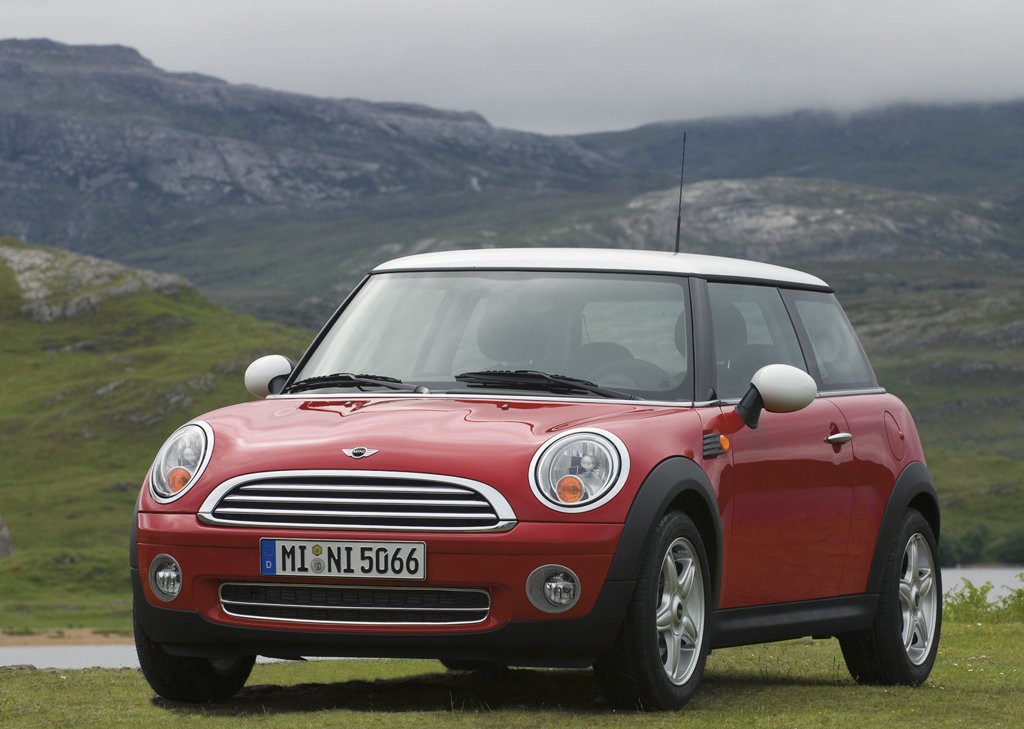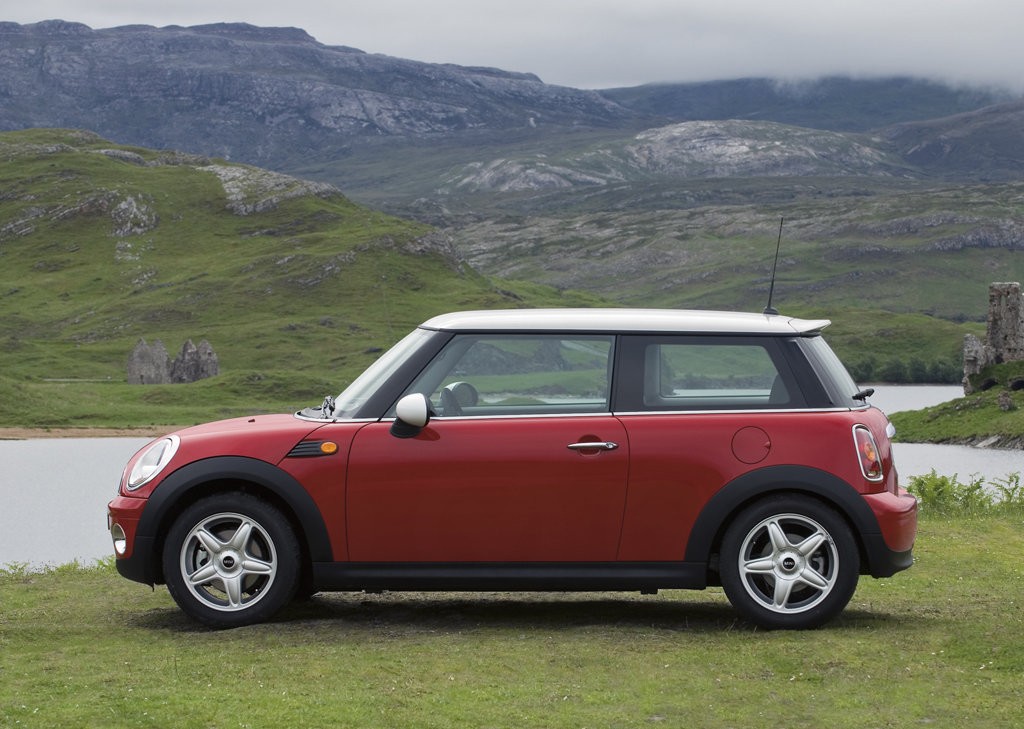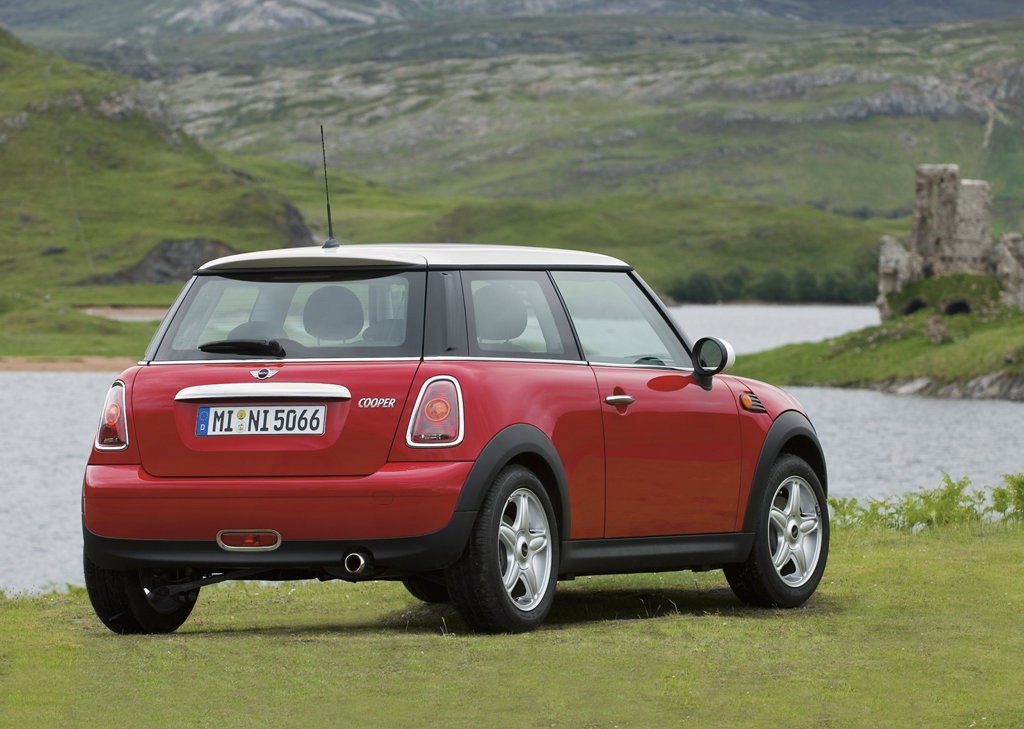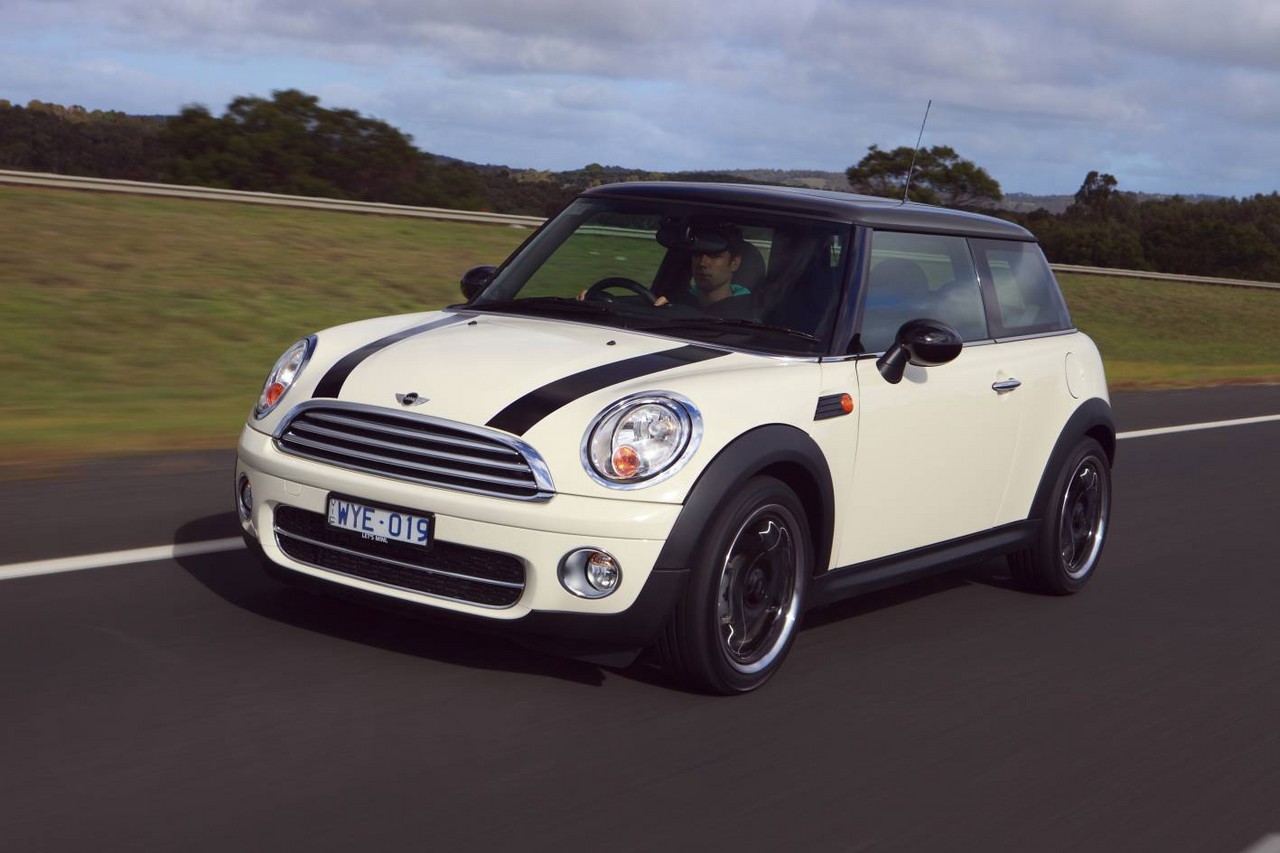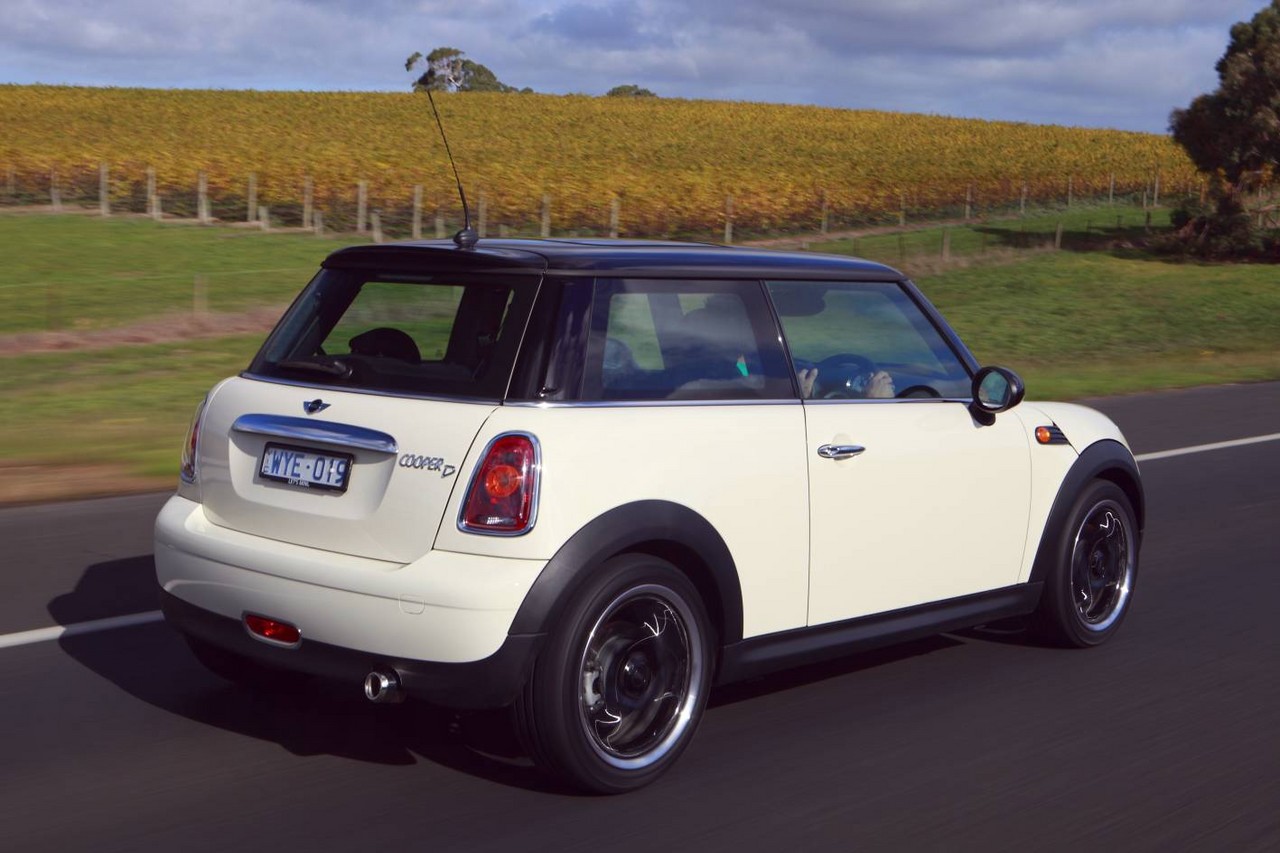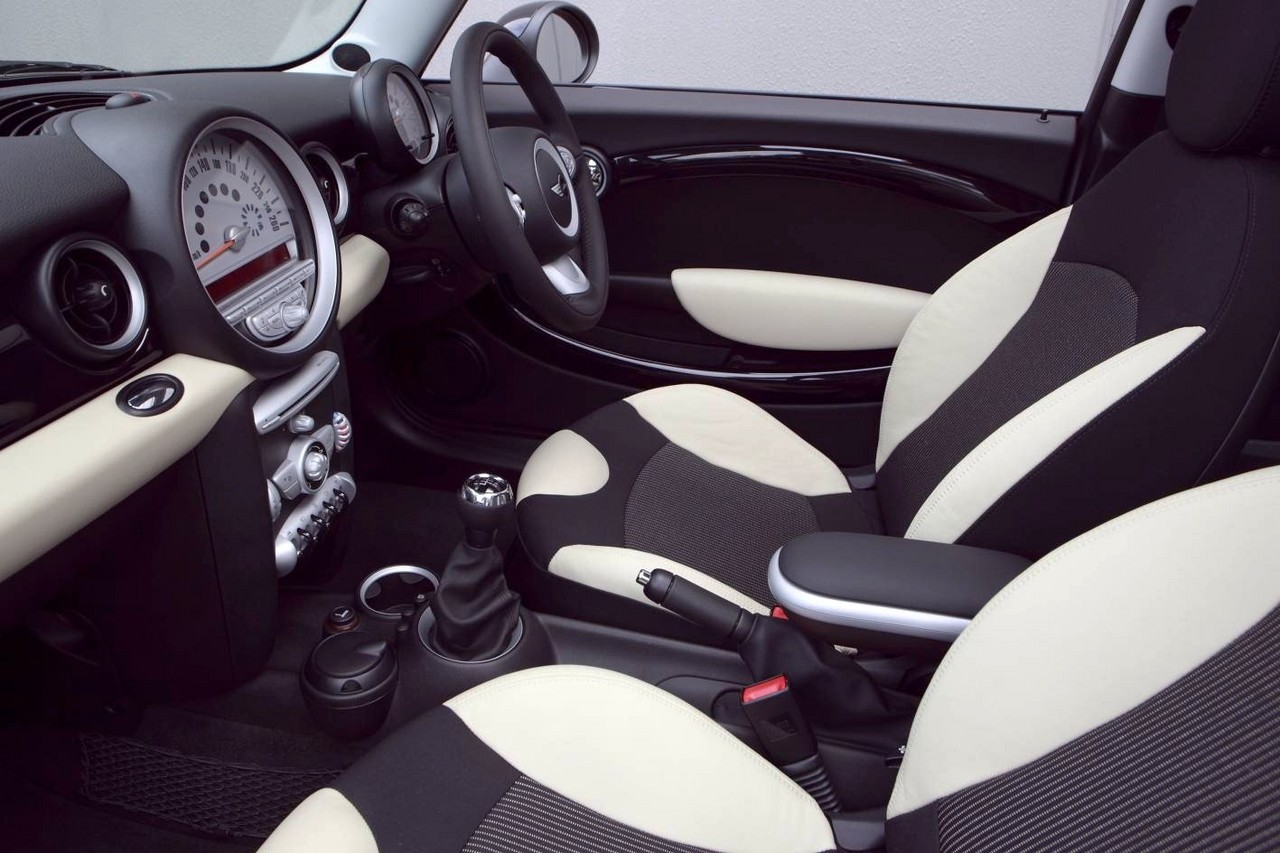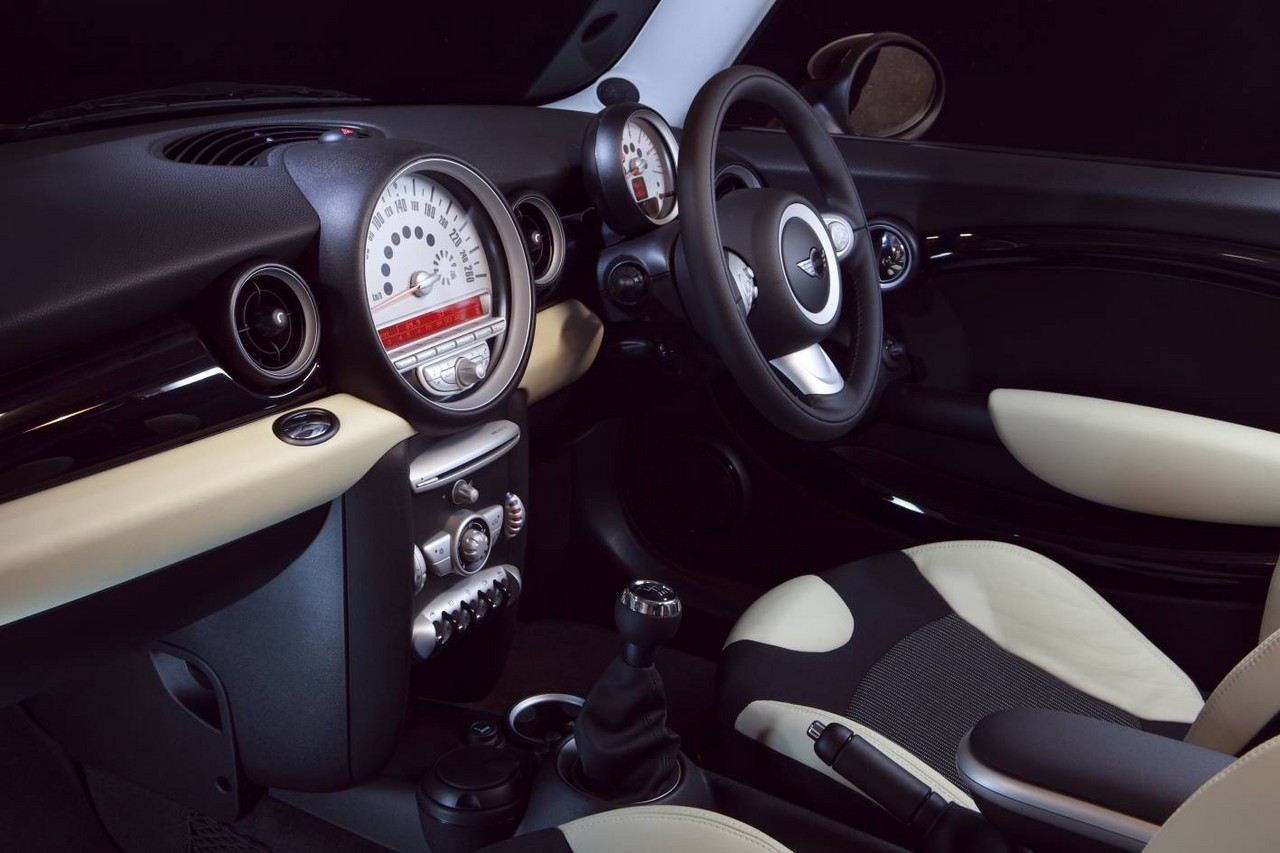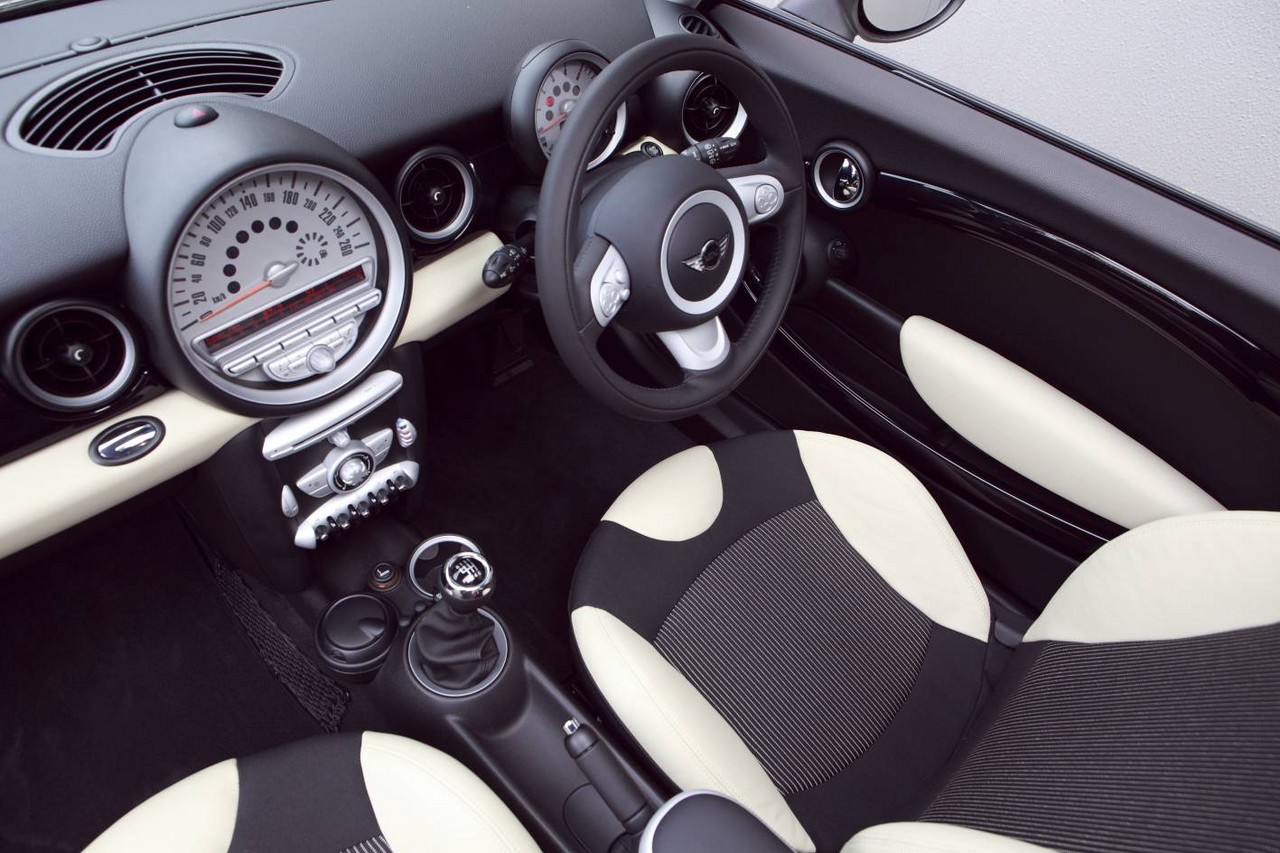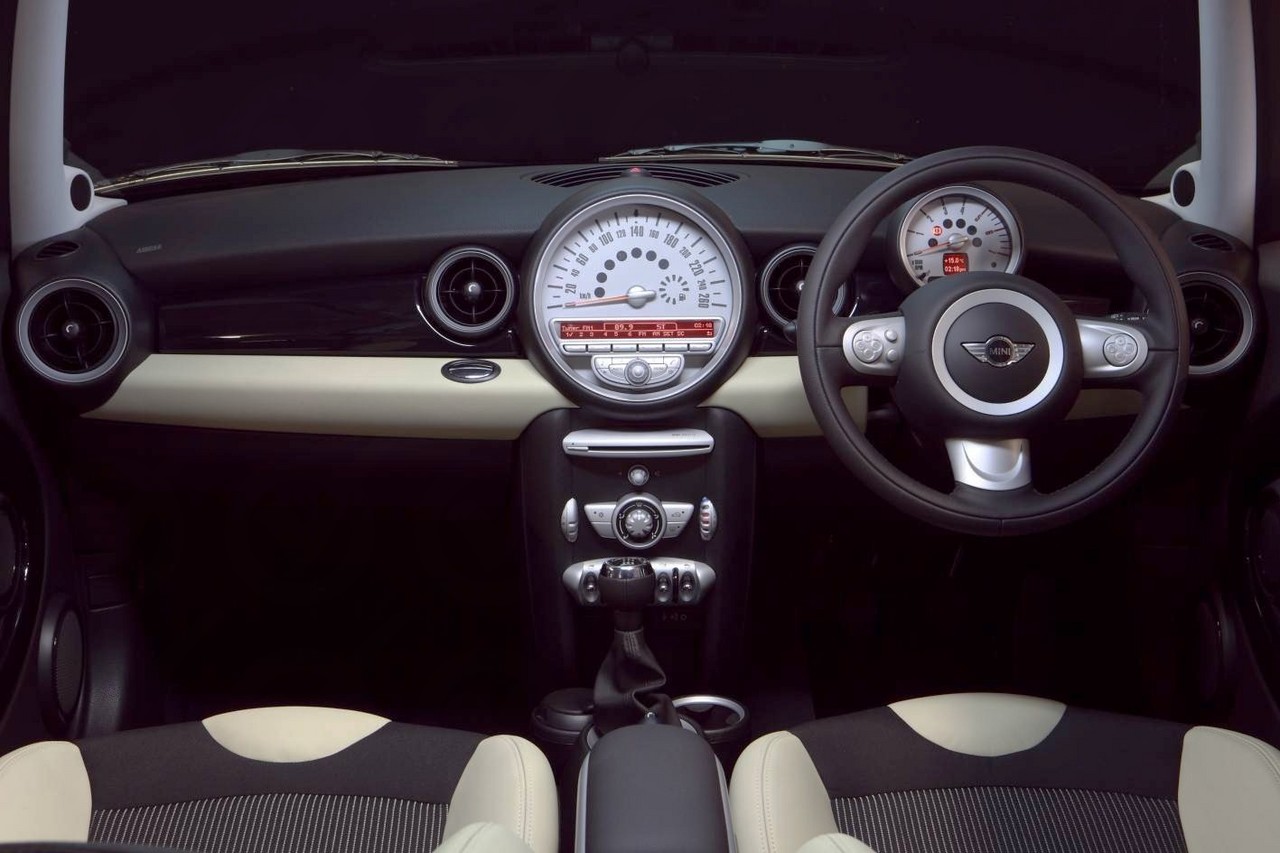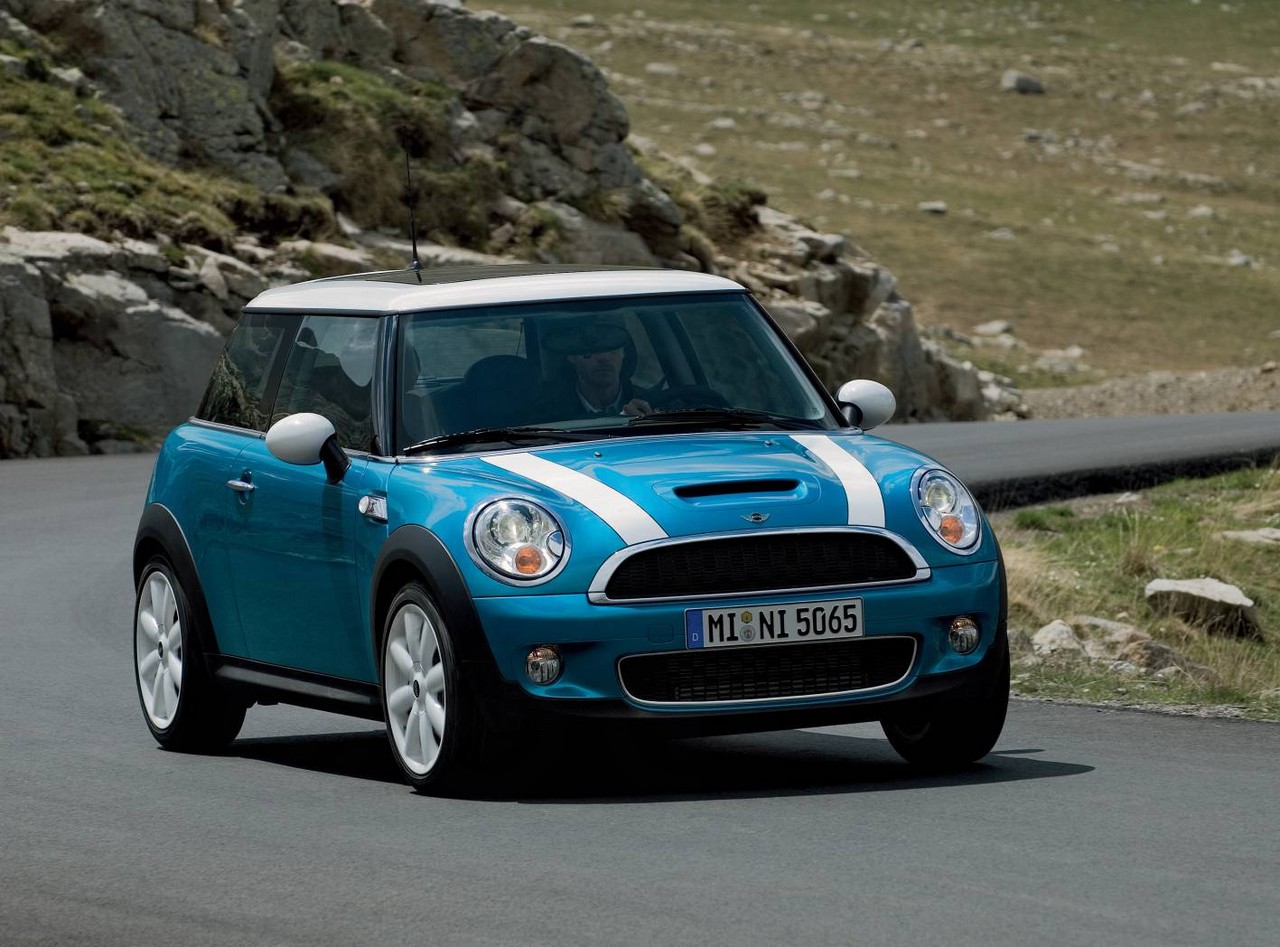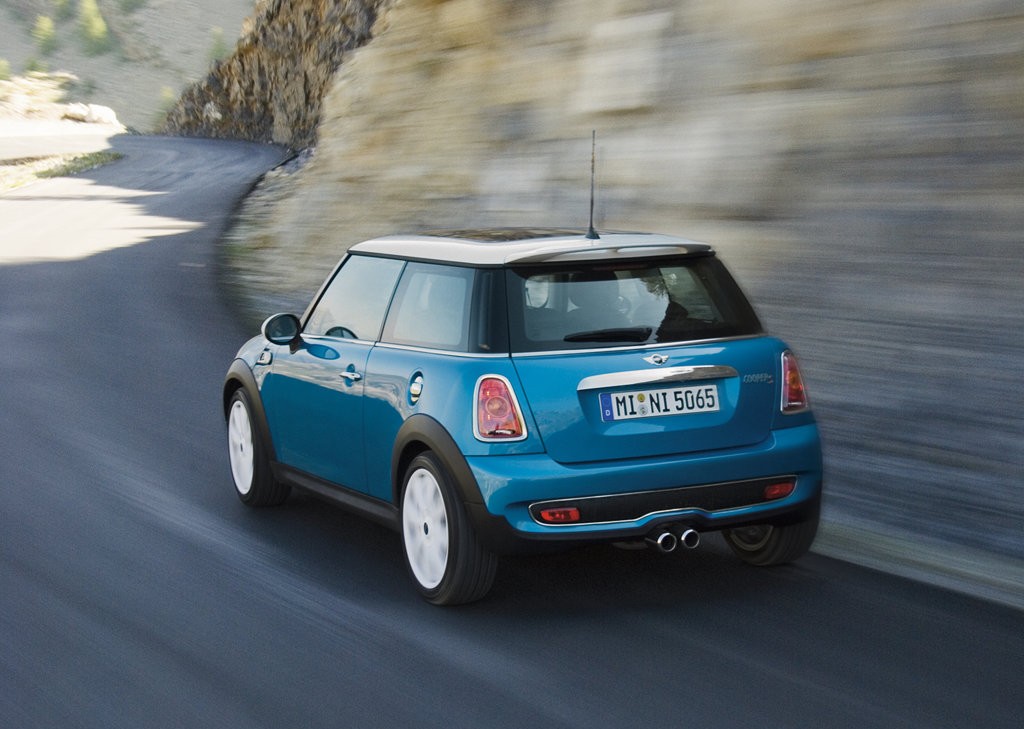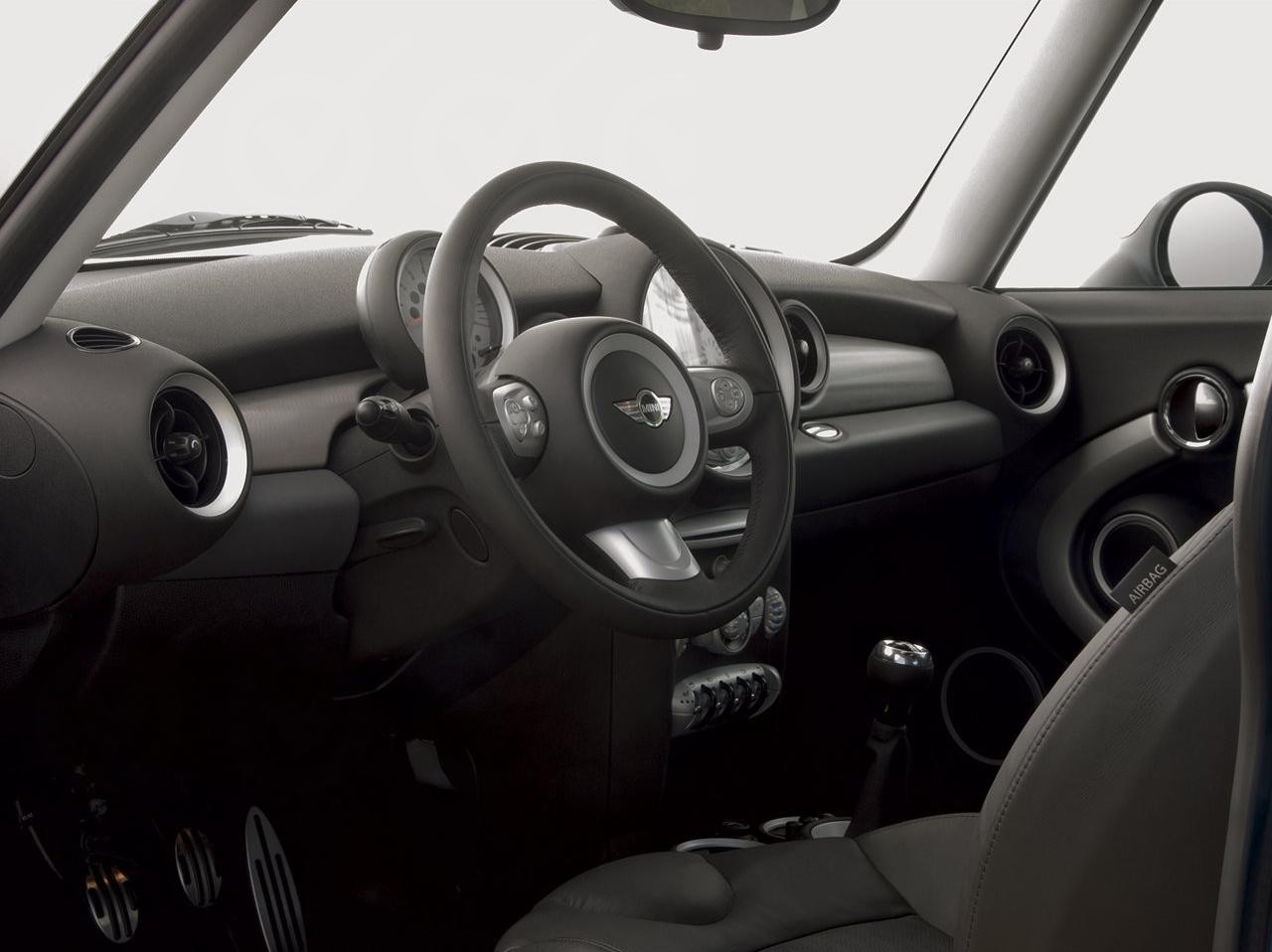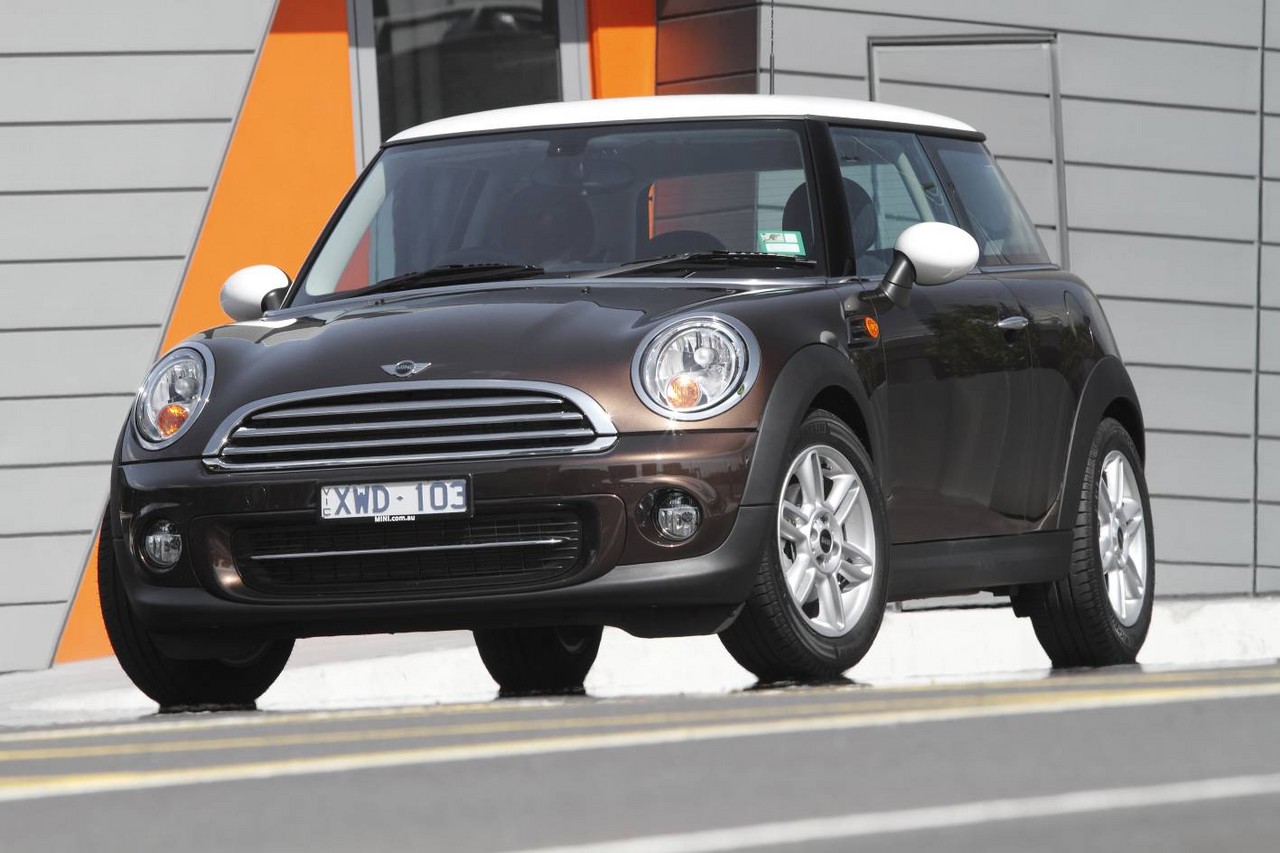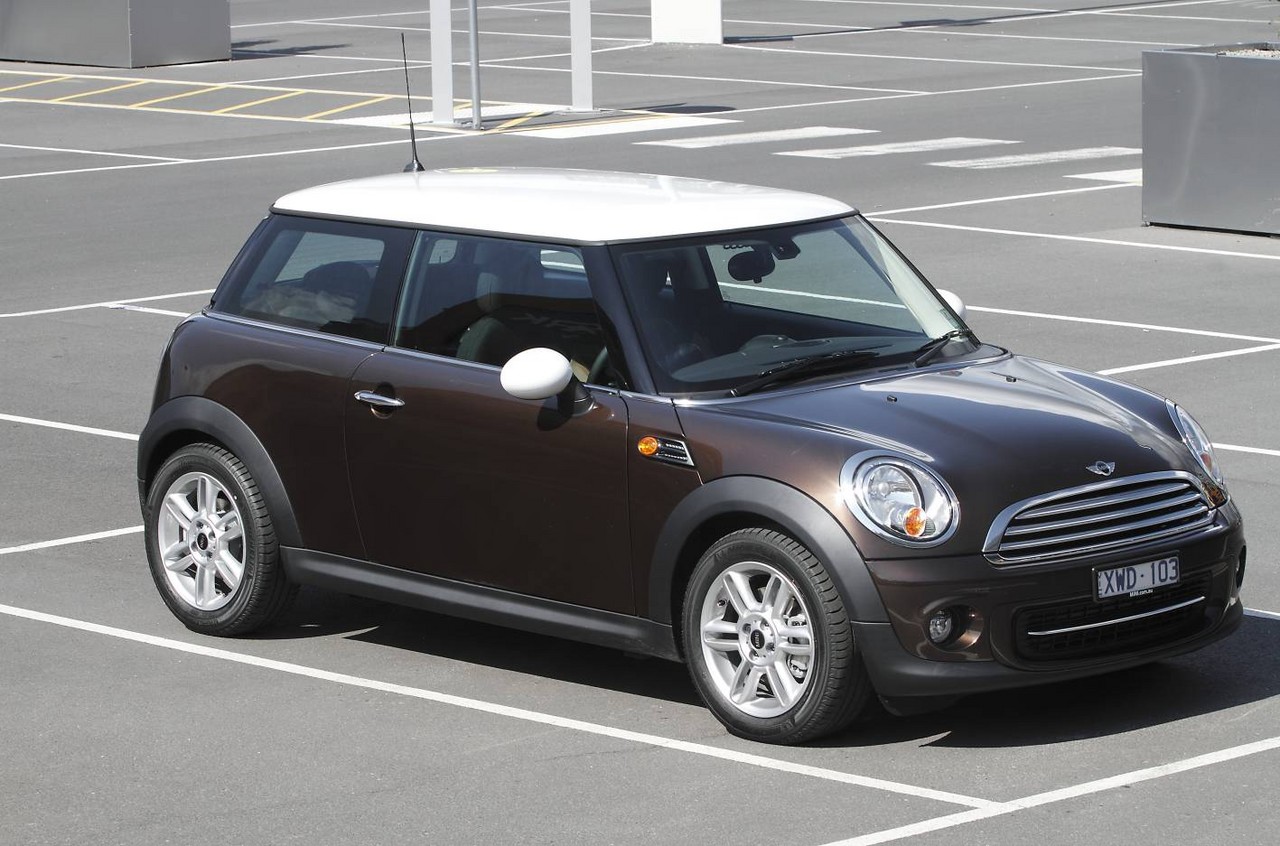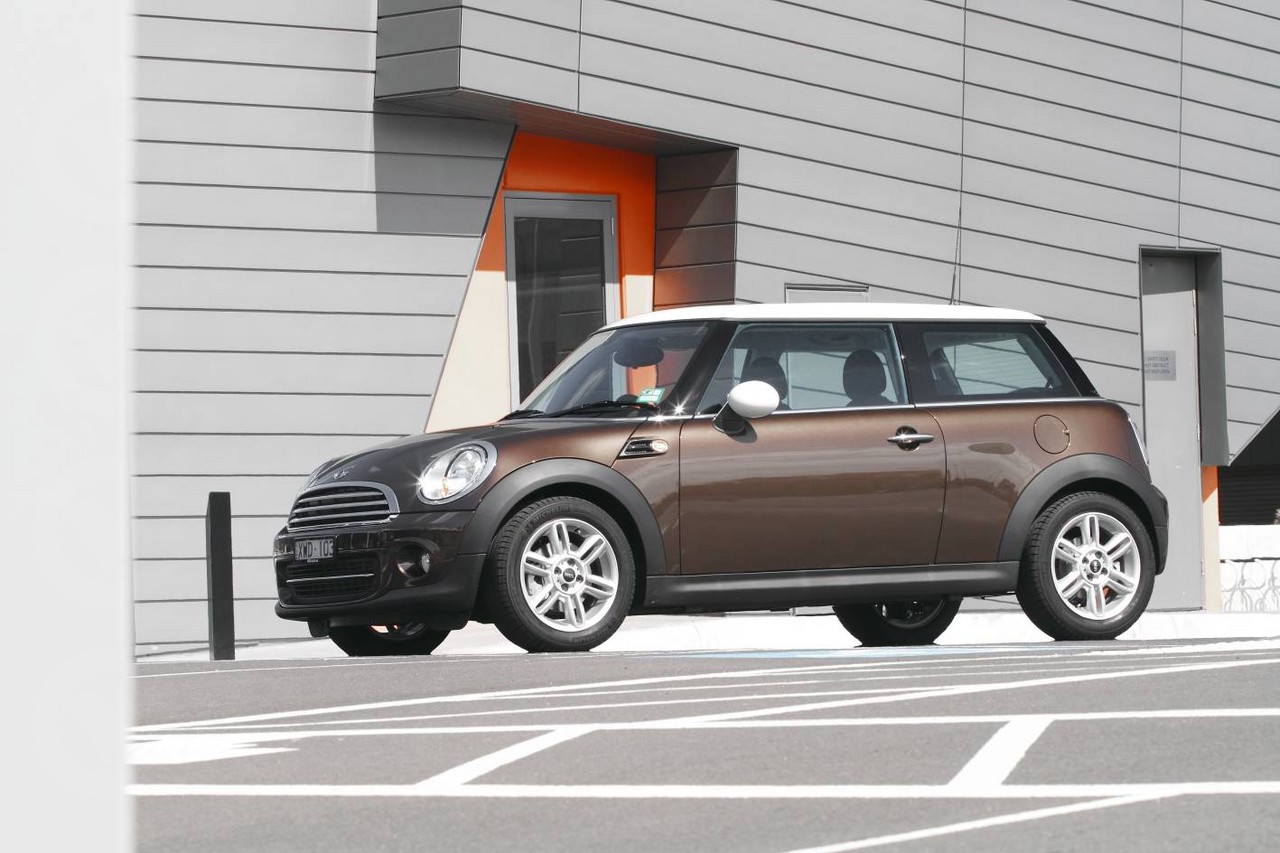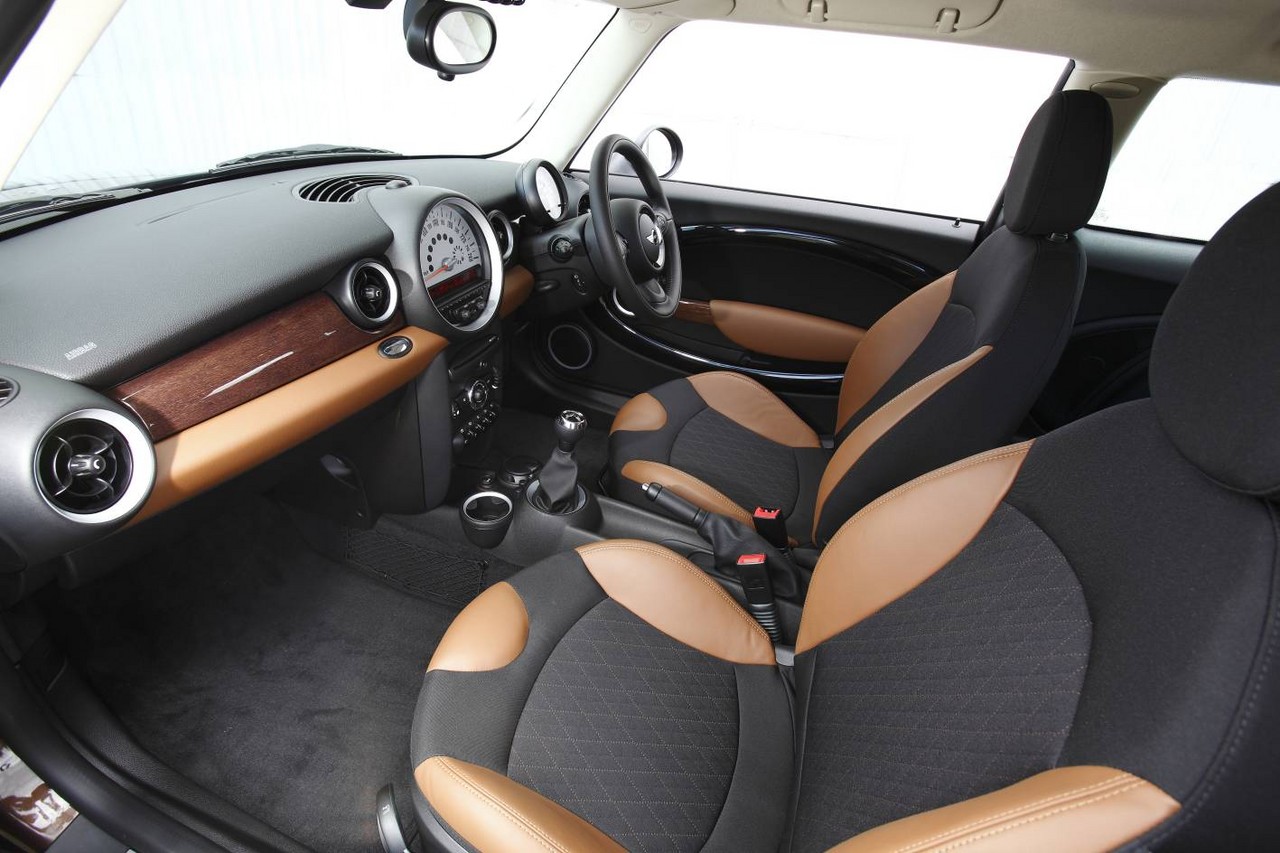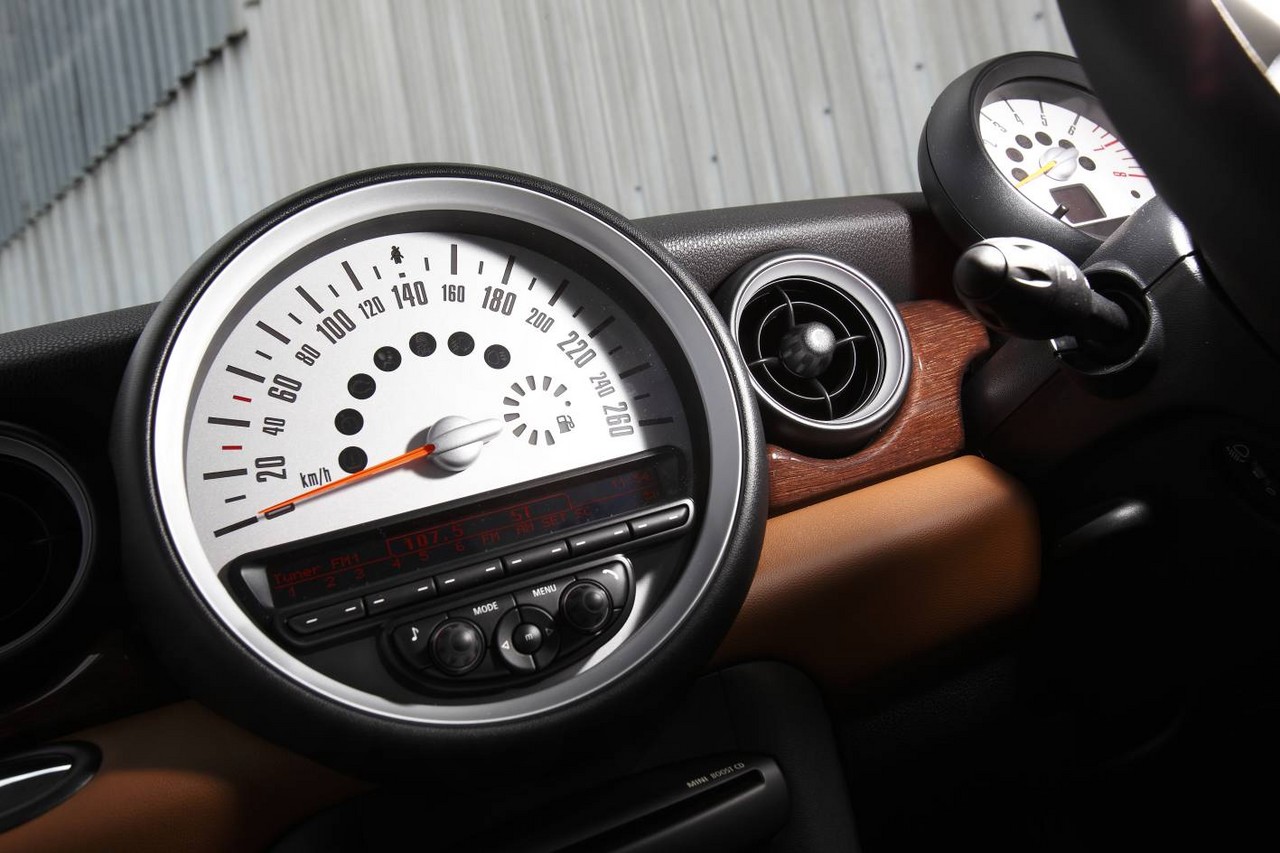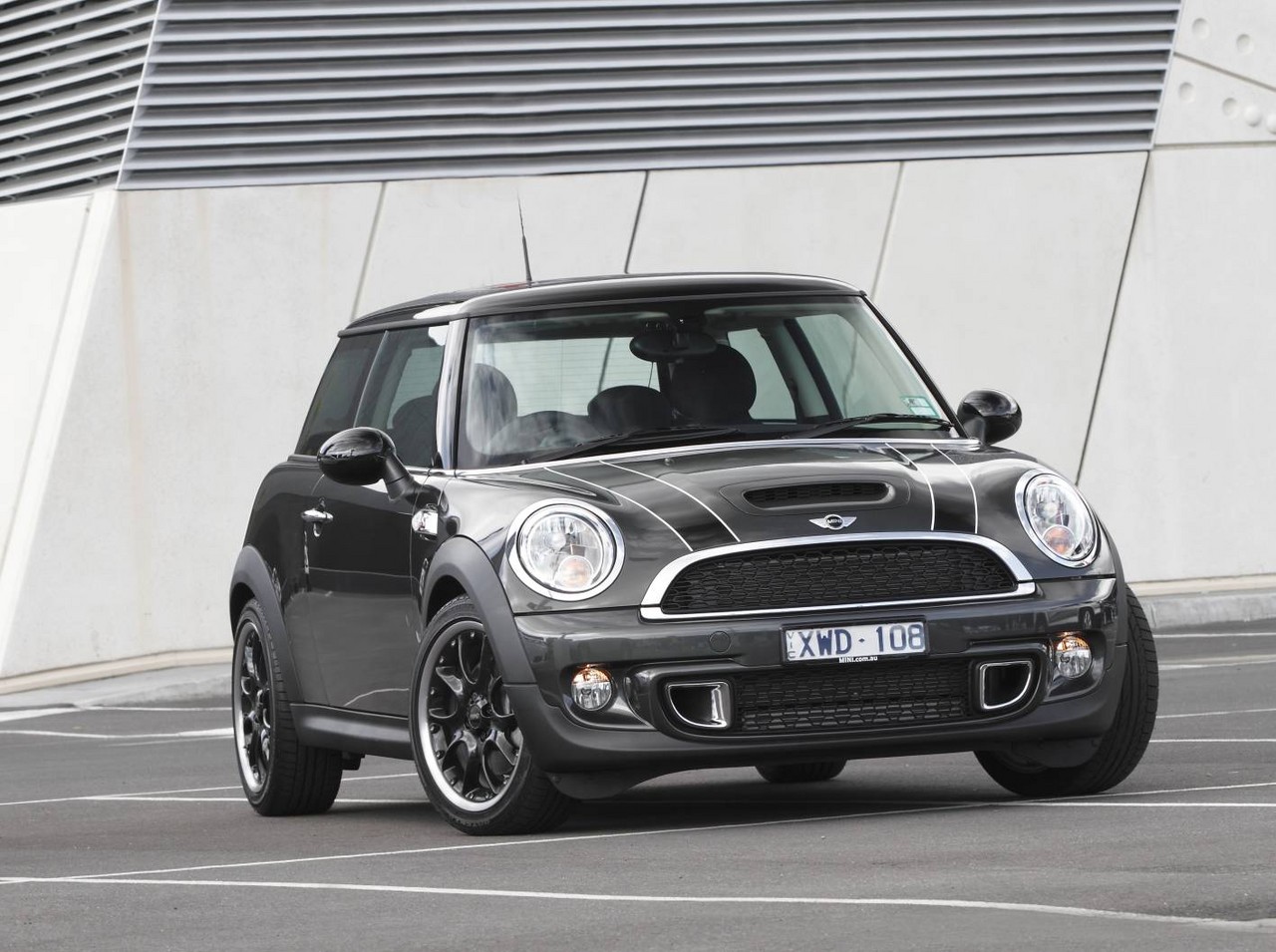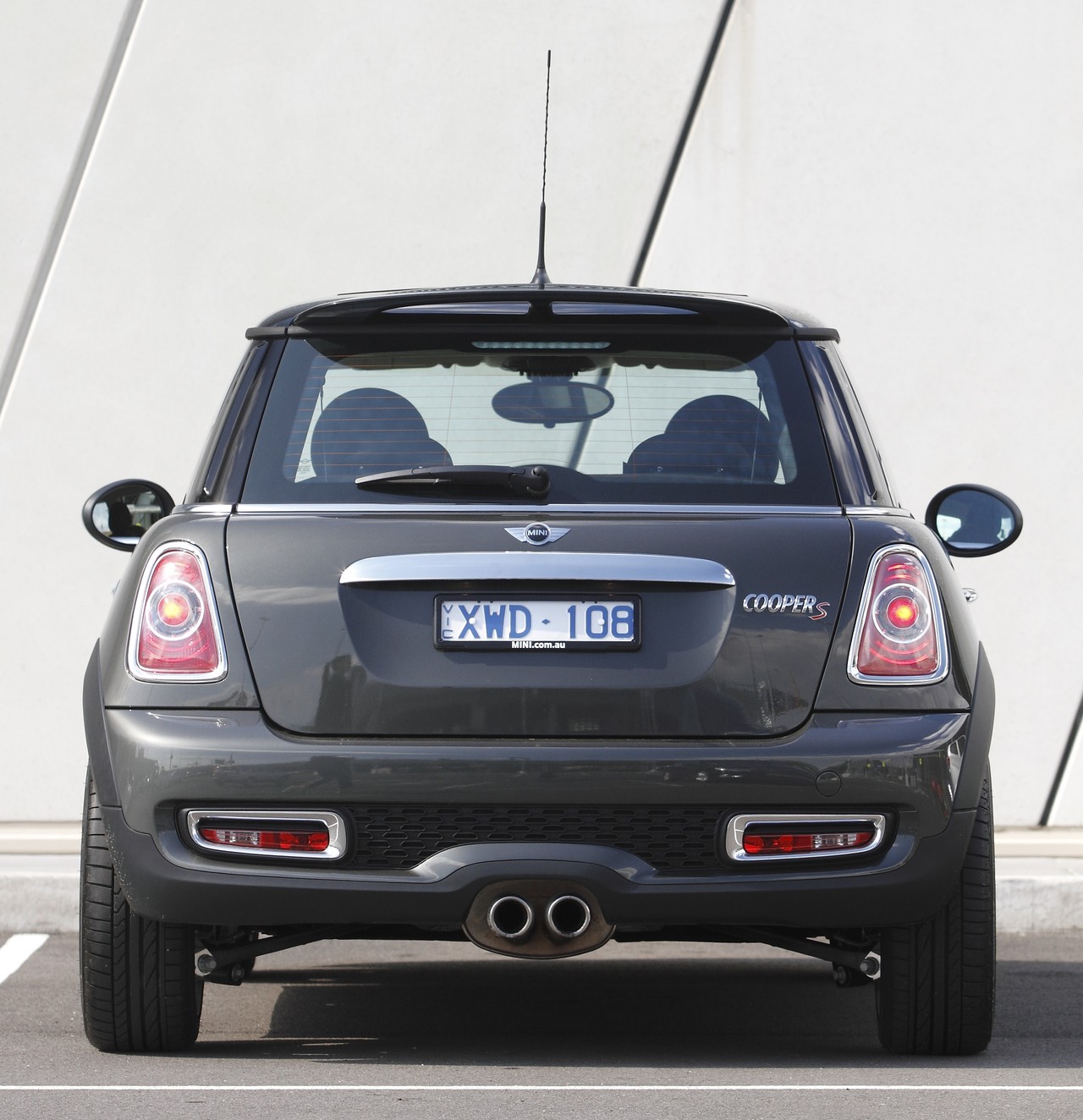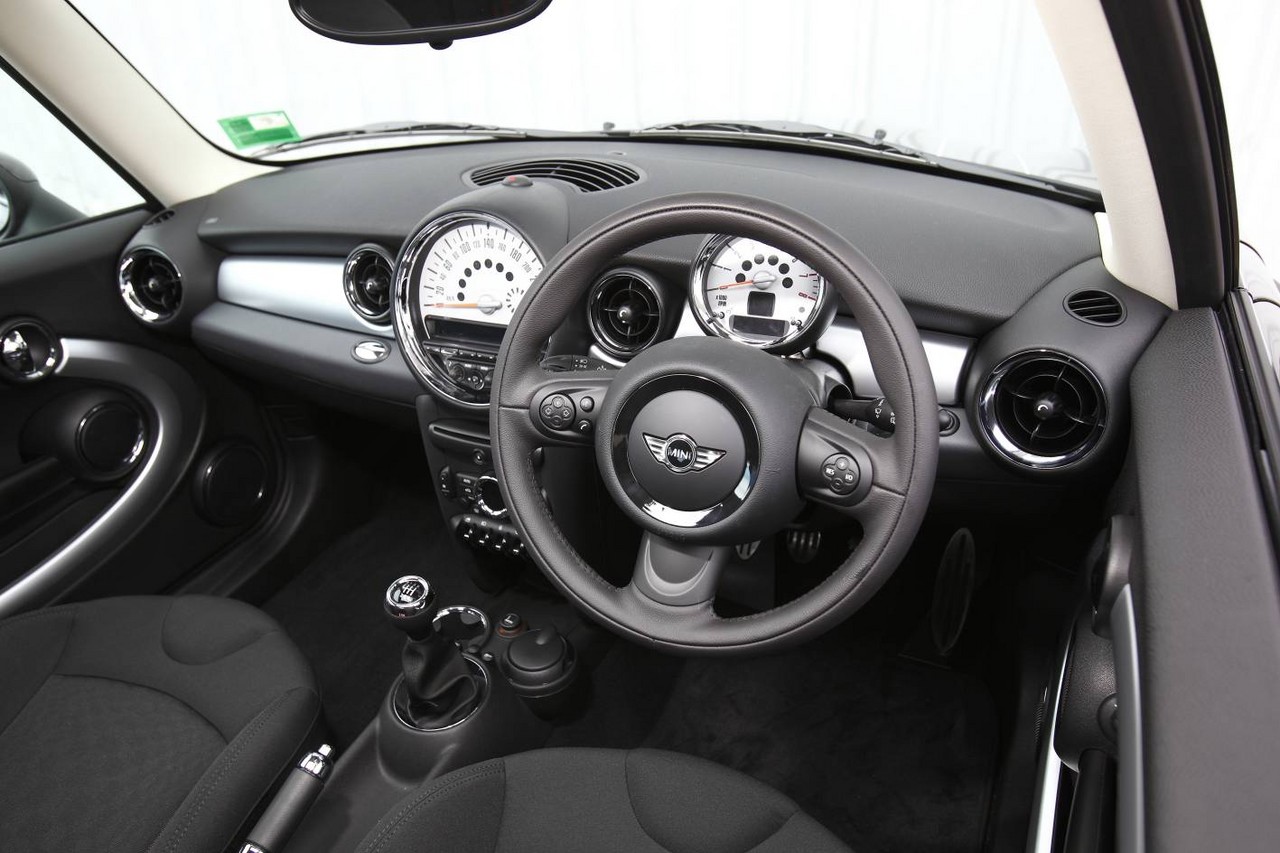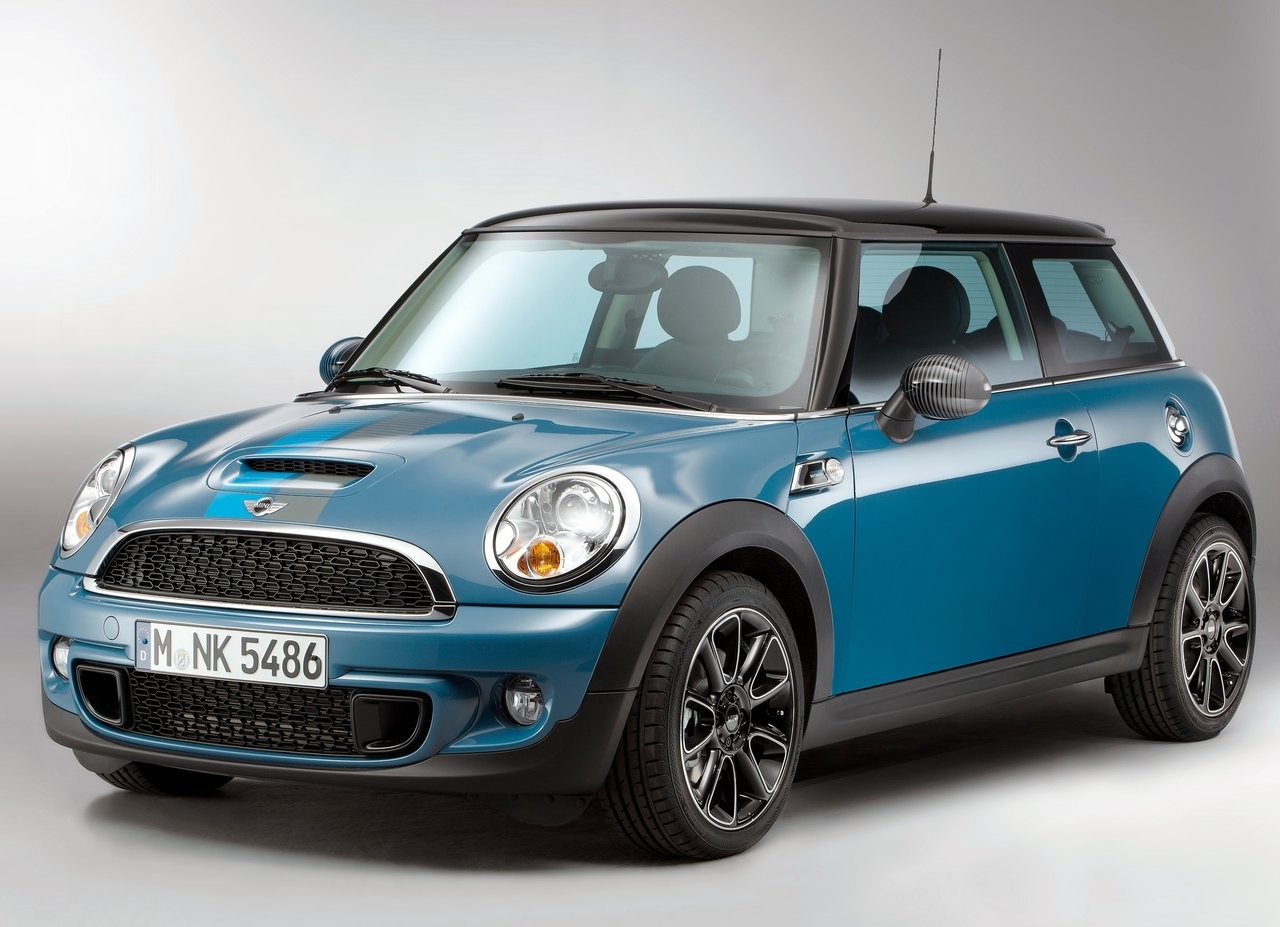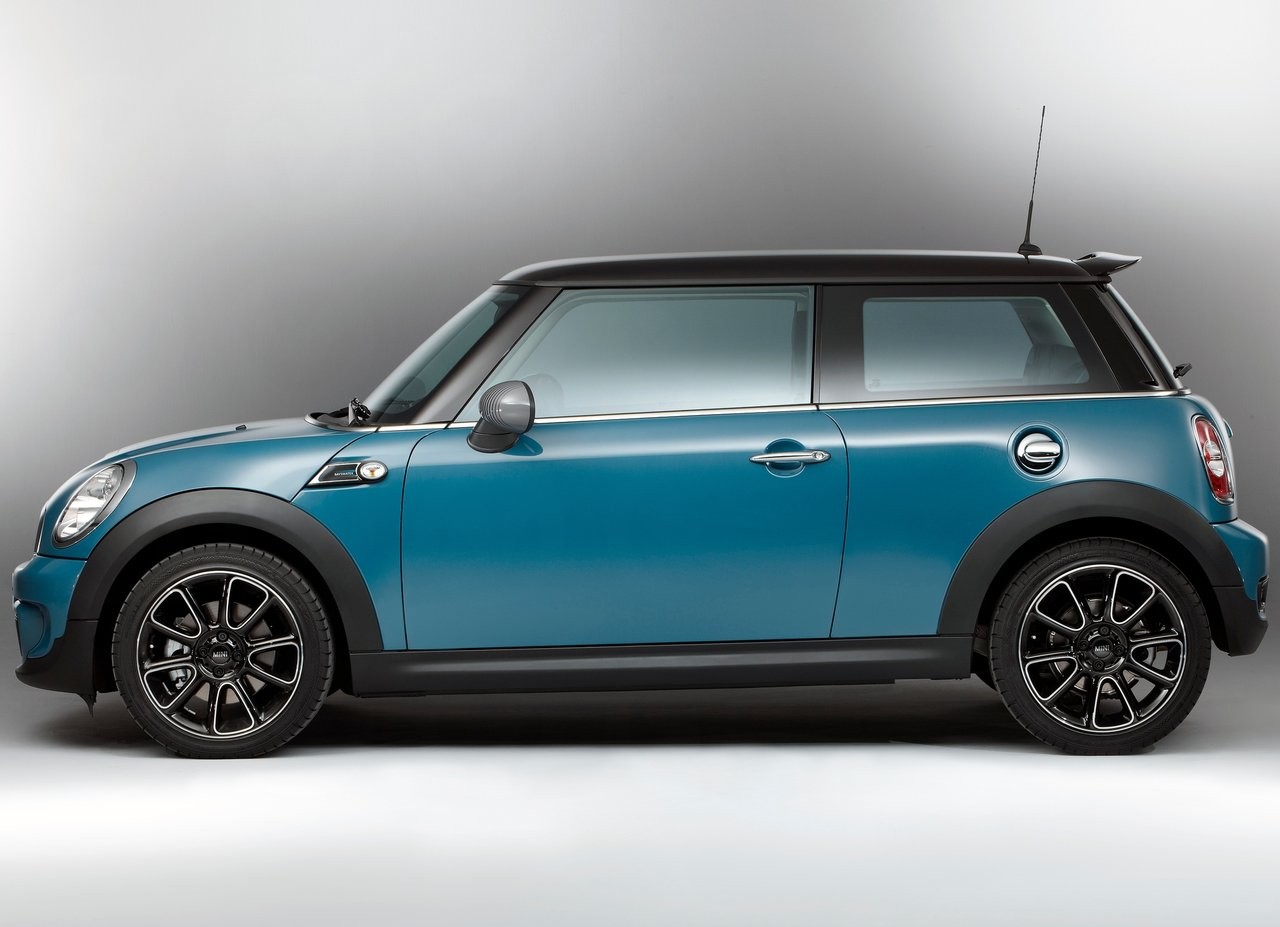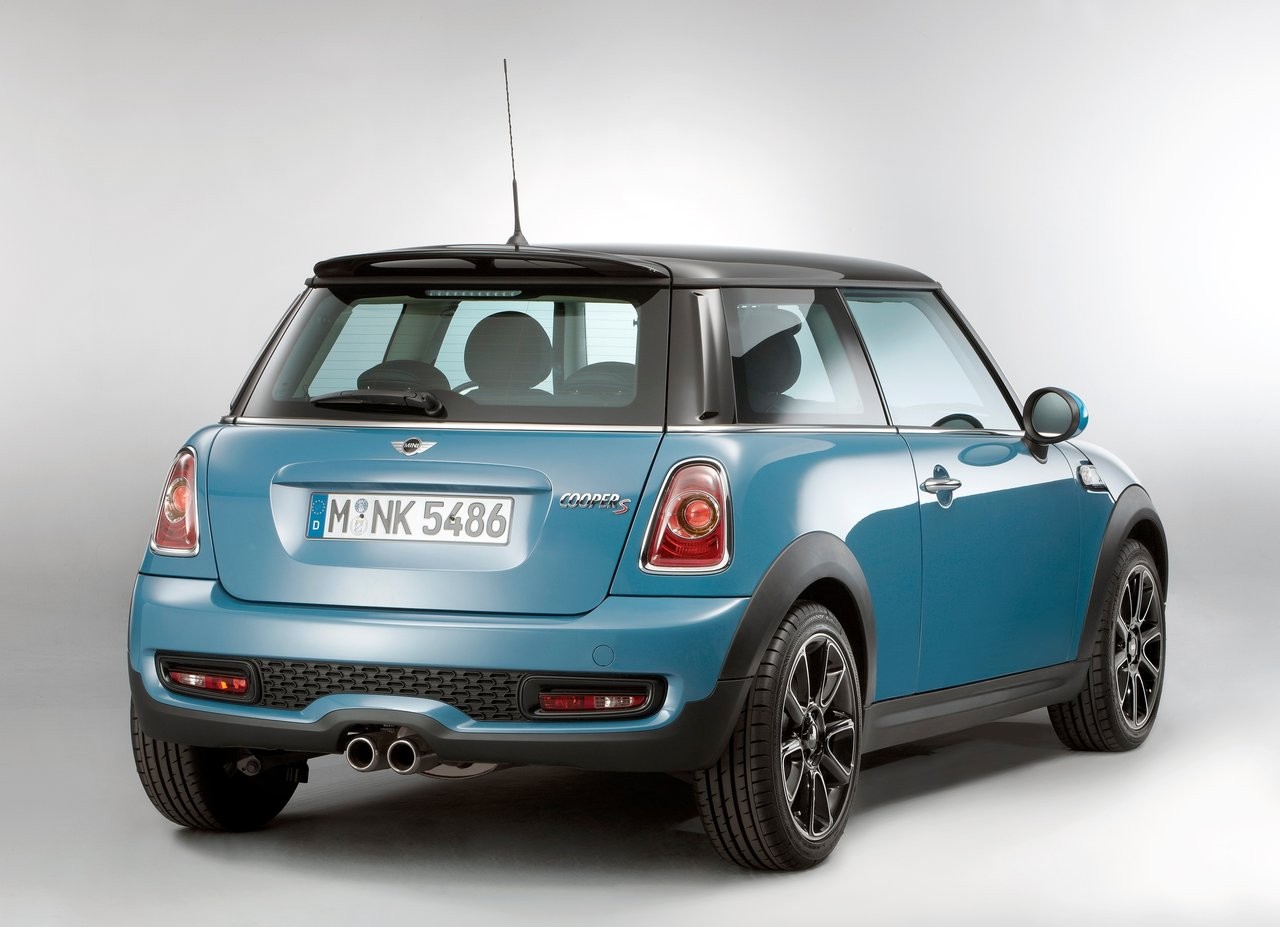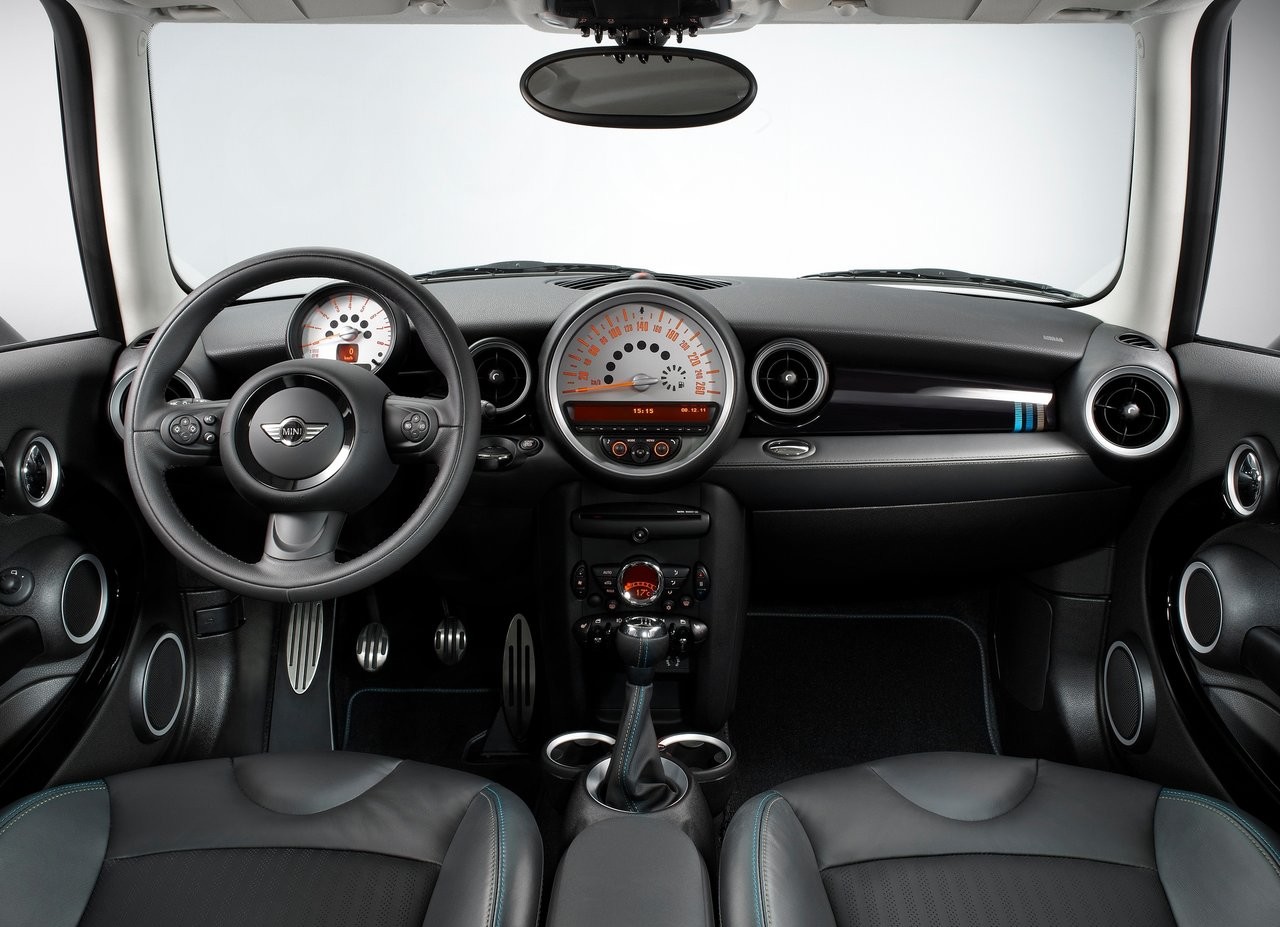
- Excellent dynamics
- Sensitive, precise steering
- Body feels solid and rigid
- For Cooper S and JCW, satisfying turbocharged petrol engines
- Suspension lacks compliance
- Cramped rear seat
- Limited boot space
- Road noise on coarse-chip roads
- Petrol engines susceptible to premature timing chain tensioner wear
Review: Mini R56.I Cooper (2007-10)
Overview
Released in March 2007, the Mini R56 Series I (R56.I) Cooper was a small, three-door hatchback. Manufactured in Cowley, England, the front-wheel drive R56.I Cooper was initially available with naturally aspirated and turbocharged 1.6-litre four-cylinder petrol engines (the Cooper and Cooper S, respectively). The range was subsequently expanded with the John Cooper Works (2008) and Cooper D (2009).
Engines
At launch, the MINI Cooper was by a 1.6-litre ‘Prince’ engines which had a two-piece bedplate structure for the crankcase, the cylinder block and bearing housing were made of cast aluminium alloy, composite structure double overhead head camshafts (DOHC), four valves per cylinder, variable intake and exhaust valve timing, variable intake valve lift (based on BMW’s ‘Valvetronic’), port injection and compression ratios of 11.0:1. Specifically, intake valve lift could be adjusted between 0.2 and 9.5 millimetres, with the changeover time between these extremes requiring only 300 milliseconds.
The N14B16CD engine in the MINI Cooper S had similar construction, but added an intercooler, twin-scroll turbocharger, sodium-filled exhaust valves for heat dissipation, direct petrol injection and a compression ratio of 10.5:1. While the wastegate limited charge pressure to 0.8 bar at 1400 rpm, it is understood that peak charge pressure was 0.9 bar. Furthermore, the common rail direct injection system was pressurised by a high pressure pump at the rear of the intake camshaft. As such, fuel from the common rail was pumped into the combustion chambers through the injection valves in the side of the cylinder heads.
Compared to the Cooper S engine, changes for the John Cooper Works’ N14B16C engine, included:
- A thicker cylinder head for ‘optimised stability’ and a modified cylinder gasket;
- Specially polished pistons with reinforced sidewalls;
- Upgraded intake valves and valve seat rings (stronger and more resistant materials);
- A larger twin-scroll turbocharger which provided maximum charge pressure of 1.3 bar (up from 0.9 bar);
- A lower compression ratio (10.0:1);
- A larger air intake pipe and air mass sensor; and,
- A larger catalytic converter and rear part of the exhaust system to reduce exhaust gas back pressure.
The R56 Cooper D had a 1.6-litre DV6TED4 diesel engine which featured variable turbine geometry, double overhead camshafts, common-rail injection (operating at a maximum pressure of 1600 bar), four valves per cylinder, a diesel particulate filter and a compression ratio of 18.0:1.
| Editions | Years | Engine | Trans. | Peak power | Peak torque | |
|---|---|---|---|---|---|---|
| Cooper | N/A, Chilli, Mayfair, Camden |
2007-10 | 1.6-litre N12B16A petrol I4 | 6sp man., 6sp auto | 88 kW at 6000 rpm | 160 Nm at 4250 rpm |
| 2010 | 1.6-litre N16B16A petrol I4 | 6sp man., 6sp auto | 90 kW at 6000 rpm | 160 Nm at 4250 rpm | ||
| Cooper D | N/A, Chilli, Mayfair, Camden |
2009-10 | 1.6-litre DV6TED4 turbo-diesel I4 | 6sp man., 6sp auto | 82 kW at 4000 rpm | 270 Nm at 1750-2250 rpm |
| Cooper S | N/A, Chilli, Mayfair, Camden |
2007-10 | 1.6-litre N14B16CD turbo petrol I4 | 6sp man., 6sp auto | 128 kW at 5500 rpm | 240 Nm at 1600-5000 rpm (260 Nm Overboost) |
| 2010 | 1.6-litre N14B6A turbo petrol I4 | 6sp man., 6sp auto | 134 kW at 5500 rpm | 240 Nm at 1600-5000 rpm (260 Nm Overboost) |
||
| John Cooper Works | N/A | 2008-10 | 1.6-litre N14B16CD turbo petrol I4 | 6sp man. | 155 kW at 6000 rpm | 260 Nm at 1850-5600 rpm (280 Nm at 2000-5300 rpm Overboost) |
‘Minimalism technologies’
From August 2007 production, the following were standard across the entire R56 range:
- Automatic Start/Stop function (manual transmissions only): automatically switches the engine off when the vehicle is stationary and the driver puts the car into neutral. To restart the driver only need engage the clutch again before pulling away in the normal manner. The system may be de-activated at the touch of a button when not required;
- Brake Energy Regeneration: uses an Intelligent Alternator Control (IAC) and an Absorbent Glass Mat battery to recycle previously lost energy, which saves fuel. The IAC reduces drag on the engine by only engaging when required to charge the battery, whereas a traditional alternator is always pulling power from the engine. Additionally, the energy generated by the engine on over-run (under braking or descending a hill) was previously wasted. Now this lost energy is utilised by the IAC to charge the battery; and,
- Shift Point Display (manual transmissions only): aids drivers of manual transmission MINIs in selecting the most economical gear in which to drive. The engine management system analyses speed, road situation and accelerator pedal position and based on this data calculates optimum gearing. The ideal gear is then displayed by number in the cockpit display.
2010 ‘Prince’ engine upgrades
Announced in January 2010 and on sale from March 2010, the MINI First and One were powered by 1.6-litre petrol engines (replacing the 1.4-litre engine) and the entire petrol engine range was upgraded for increased power and lower fuel consumption. Changes for the upgraded engines included:
- Polished camshaft and main bearings to reduce friction;
- An on-demand, map-controlled oil pump;
- An improved, low-friction engine vacuum pump;
- A map-regulated water pump that operated on a pulsed cycle (rather than on or off); and,
Improved heat management.
Coinciding with this production change, MINI Cooper S models with manual transmissions were fitted with a new self-adjusting clutch which had carbon-coated linings. According to MINI, the new clutch reduced service costs and improved gear synchronisation while maintaining consistent pedal feel.
Dimensions
Compared to the MINI R50/R53 Cooper , the R56 Cooper was 73 mm longer (at 3699 mm), 5 mm narrower (1683 mm) and 6 mm lower (1407 mm), though wheelbase length was unchanged (2467 mm). Visually, the R56 Cooper could be identified by its higher bonnet line, restyled grille, reshaped C-pillars and headlights which were fixed to the front quarter panels. Inside, the front seats had sculpted backs to create additional leg room for rear seat occupants.
Suspension and steering
The R56 Cooper’s front suspension consisted of a single-joint MacPherson spring strut axle, while the rear Z-axle had longitudinal struts with centrally-pivoted control arms; the R56 Cooper also introduced an electric power steering system.
Safety equipment
Standard safety equipment for the MINI R56 Cooper included dual front airbags, front side airbags, full length curtain airbags, ABS, electronic brake force distribution, brake assist, electronic stability control, traction control, corner braking control and front seatbelts with pretensioners and load limiters.
Brakes
The MINI Cooper and Cooper D had 280 mm by 22 mm inner-vented front brake discs and 259 mm by 10 mm solid rear discs; the Cooper S, however, had 294 mm by 22 mm front brake discs. The John Cooper Works variants were distinguished by their 316 mm inner-vented front and 280 mm rear brake discs.
Euro NCAP crash testing
In Euro NCAP crash testing , the MINI R56 Cooper received a five star adult occupant protection rating with a score of 32.51 out of 37. In the frontal offset impact test, protection from serious leg injury was marginal for the driver. In the side impact test, there was a moderate risk of serious chest injury for the driver.
Features
Standard features for the MINI R56 Cooper and Cooper D included 15-inch ‘5 star Spooler’ alloy wheels, a six speaker sound system with CD player, MP3 compatibility and auxiliary input, air conditioning, cruise control, a multi-function leather-wrapped steering wheel, bi-xenon headlights, 50/50 split and folding rear seats, remote central locking, power windows and mirrors, a height and reach adjustable steering wheel, heated rear window, height adjustable front seats, tinted glass, a trip computer and an immobiliser.
Compared to the Cooper and Cooper D, the Cooper S was differentiated by its 16-inch ‘S Winder’ alloy wheels with 195/55 R16 V runflat tyres and contoured sports seats. There was also a ‘Sport’ button which provided greater throttle response, weightier steering and revised gearshift patterns for automatic models. Visually, the Cooper S could be identified by its bonnet scoop, honeycomb radiator grille, sport bumpers and chrome-plated fuel filler cap and indicator grilles.
Finally, the range-topping John Cooper Works variants were distinguished by their 18-inch double-spoke alloy wheels with 205/40 run-flat tyres, contoured sports seats, sports steering wheel, body kit and carbon-fibre exterior detailing.
Cooper Chilli
The Cooper, Cooper D and Cooper S were also available in Chilli editions. For the Cooper and Cooper D, the Chilli editions added 16-inch ‘5 star Blaster’ alloy wheels, a ten speaker sound system, cloth/leather ‘Ray’ upholstery, front fog lights and velour floor mats. The Cooper S Chilli was also fitted with 17-inch ‘Crown Spoke’ alloy wheels, climate control air conditioning and bi-xenon headlights.
Cooper Mayfair and Cooper Camden
In August 2009, the Mayfair and Camden editions were introduced to commemorate Mini’s 50th anniversary. Compared to their standard features, the Cooper and Cooper D Mayfair received 17-inch ‘Infinite Stream Spoke Design’ 12-spoke alloy wheels, contoured front sports seats, ‘Leather Lounge’ upholstery in Toffee/Cabron Black, Toffee/black leather-wrap steering wheel, bonnet stripes in light-brown Toffee metallic paint with white pinstripes, additional headlights mounted on the front grille, black mirror caps and Mayfair badging. The Cooper S Mayfair was also fitted with xenon headlights.
The Cooper and Cooper D Camden were fitted with 17-inch alloy wheels with silver inner surfaces and matt polished contour lines, a Harman Kardon sound system with digital amplifier, ‘Mission Control’ in-car entertainment system with voice recognition, combination cloth/leather sports seats in Carbon Black and Tech White upholstery, twin-tone mirror caps and black-tinted headlight lenses. Once again, the Cooper S Camden was also fitted with xenon headlights.
Related links
Review: Mini R56.II Cooper (2010-13)
Overview
Released in October 2010, the MINI R56 Series II (R56.II) Cooper range introduced additional standard features, a subtle facelift and a new N47 engine for the Cooper D. Visually, the R56.II Cooper could be identified by its revised headlights and side indicators, new front bumper with lower air intake and larger deformation zones (for improved pedestrian safety), restyled front and rear fog lights, revised rear bumper and LED tail-light clusters.
The newly introduced LED brake lights varied in intensity with brake pressure and would display a ‘pulsing’ effect for heavy braking. Inside, there was a redesigned steering wheel and new controls for the air conditioning and audio systems.
| Editions | Engine | Trans. | Peak power | Peak torque | |
|---|---|---|---|---|---|
| Cooper | N/A, Chilli, Baker Street, Bayswater |
1.6-litre N16B16A petrol I4 | 6sp man., 6sp auto | 90 kW at 6000 rpm | 160 Nm at 4250 rpm |
| Cooper D | N/A, Chilli, Bayswater |
1.6-litre N47C16A turbo-diesel I4 | 6sp man., 6sp auto | 82 kW at 4000 rpm | 270 Nm at 1750-2250 rpm |
| Cooper S | N/A, Chilli, Baker Street, Bayswater |
1.6-litre N16B6A turbo petrol I4 | 6sp man., 6sp auto | 134 kW at 5500 rpm | 240 Nm at 1600-5000 rpm (260 Nm Overboost) |
| John Cooper Works | N/A | 1.6-litre N14B16C turbo petrol I4 (2010-12) |
6sp man. | 155 kW at 6000 rpm | 260 Nm at 1850-5600 rpm (280 Nm at 2000-5100 rpm Overboost) |
| 1.6-litre N18B16C turbo petrol I4 (2012-13) |
6sp man. | 155 kW at 6000 rpm | 260 Nm at 1850-5600 rpm (280 Nm at 2000-5100 rpm Overboost) |
||
| John Cooper Works | GP | 1.6-litre turbo petrol I4 | 6sp man. | 160 kW at 6000 rpm | 260 Nm at 1750-5600 rpm (280 Nm at 2000 rpm Overboost) |
Features
Compared to its R56.I predecessor, standard features for the R56.II Cooper were extended to include a USB audio interface, Bluetooth hands-free telephony, automatic headlights, rain-sensing wipers, heated door mirrors and headlight washer jets.
Cooper Baker Street and Cooper Bayswater
In May 2012, limited-run Baker Street and Bayswater editions were released. The Baker Street editions could be identified by their 16-inch six-spoke black alloy wheels, gloss black door mirrors, V-shaped black bonnet stripes, black painted roof and choice of Rooftop Grey, Pepper White and Midnight Black paint finishes. Inside, the Baker Street editions featured a satellite navigation system and the grey seats had a unique diamond pattern which was extended to the door trim and dashboard.
The Bayswater editions could be identified by their 17-inch black and silver alloy wheels, black painted roof, unique badging and choice of Kite Blue, Midnight Black and Eclipse Grey paint finishes (with contrasting bonnet stripes). Inside, the Bayswater editions featured a Harman Kardon premium sound system, anthracite leather seats with contrast stitching, piano black dashboard inserts and chrome accents.
Mini John Cooper Works GP
Released in early 2013, only thirty (30) Mini John Cooper Works GP vehicles were delivered to Australia. Based on the John Cooper Works variants and pictured below, the GP editions had racing-style modifications with 17-inch alloy wheels with 215/40 R17 sports tyres (though 205/45 R17 tyres were also available), adjustable coil-over suspension, upside-down front shock absorbers (for greater longitudinal and lateral stiffness), increased front and rear camber and reduced front wheel toe-in. The John Cooper Works GP was also fitted with 330 mm by 25 mm front brake discs with six-piston fixed calipers and 280 mm by 10 mm rear discs.
Visually, the John Cooper Works GP could be identified by its xenon headlights in black shells, Thunder Grey metallic paint finish and red edging around the bonnet, mirror caps and side air intakes. Inside, there were Recaro sports seats, a thick-rimmed leather steering wheel, anthractite roof liner and piano black finishes.
Related links
- Press Kit: MINI R56.II John Cooper Works (November 2012)
- Specifications: MINI R56.II Cooper (November 2012)
- Wikipedia.org: MINI R56 Cooper
